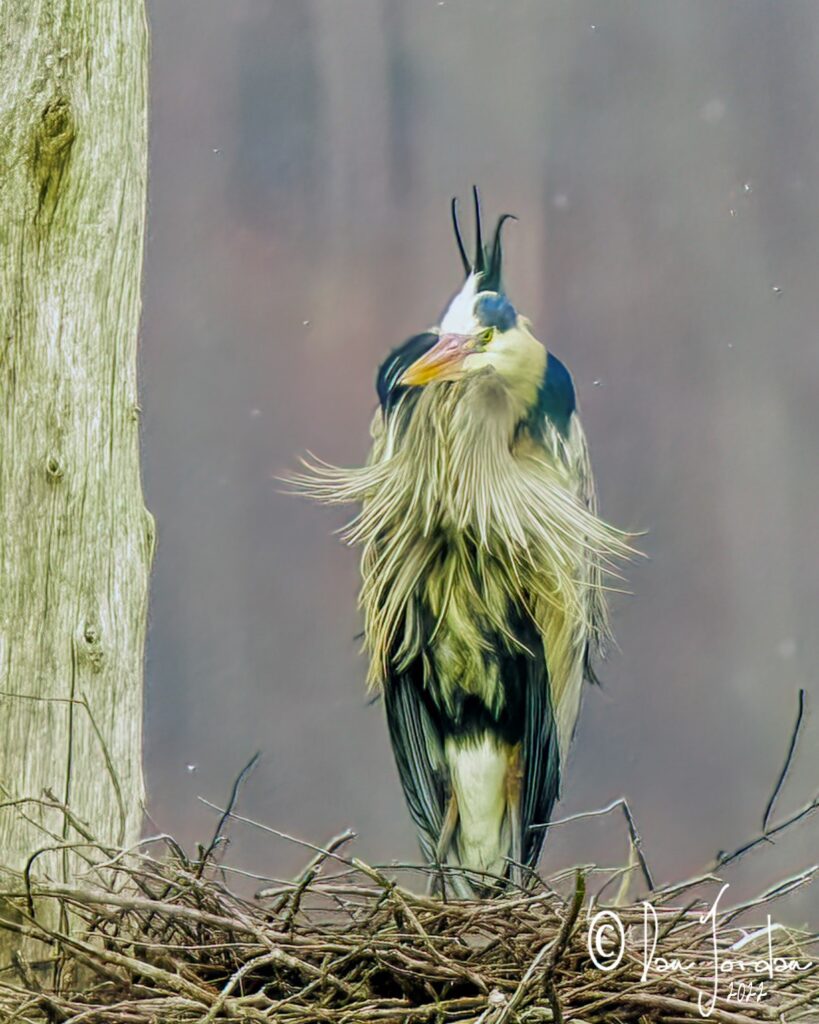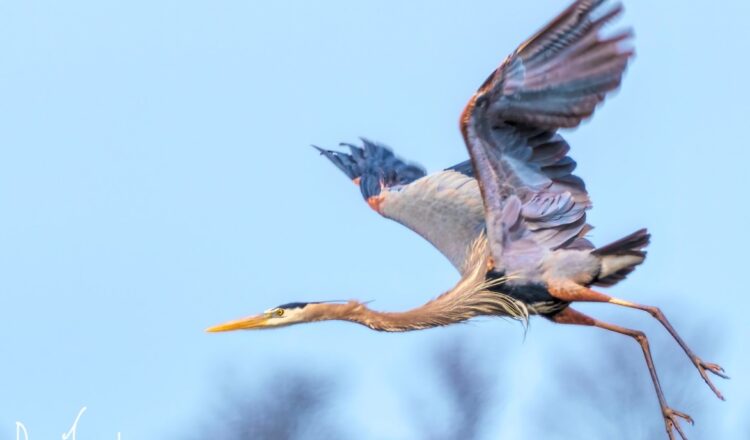Amazing photography and insight into “GBH”
By Dan Jordan, Jordanphotog.com
The country song lyric, “She was all knees and elbows”, reminds me of a great blue heron taking flight or coming in for a landing. Their gangly appearance does not mean that they are unskilled aviators but is testament to their long legs and wings.
The above photo was taken at Barnum swamp in July of 2022 of an adult GBH arriving at a nest.
Great blue herons are the largest of the north American herons. They can reach heights of nearly 5 feet and have up to 6-foot wing spans. GBH males can weigh up to 5.5 pounds while the more diminutive females can weigh as much as 4.7 pounds. A GBH is only slightly taller than a great egret but weighs nearly twice as much.
GBH’s exhibit only a slight dimorphism, that is the sexes only show minor differences. Other than size/weight, one would be hard pressed to distinguish a male from a female. During mating season, the plumage takes on a much more vibrant appearance, with saturated blue and orange tones. That first photo in this article is of a GBH in mating plumage.
Other members of the heron family that reside in our area are green herons and black crowned night herons. There is also a great white heron found in the far southern reaches of north America and the Caribbean.
Great blue herons can be found throughout north America, as far north as southern Alaska. Those which live in the northern climes, are usually migratory, however, a few hardy souls will remain as long as their water source remains unfrozen. This usually limits them to running water like rivers and creeks, although the latter are more prone to freezing over.
Nearly all of herons’ diet consists of fish. Other water dwelling animals such as crayfish and frogs will opportunistically be consumed. GBH’s have also been known to consume small rodents and even young muskrats. Their preference is small fish but will eat very large ones as well. It is rare, but herons have been known to choke to death by trying to swallow too large a meal.
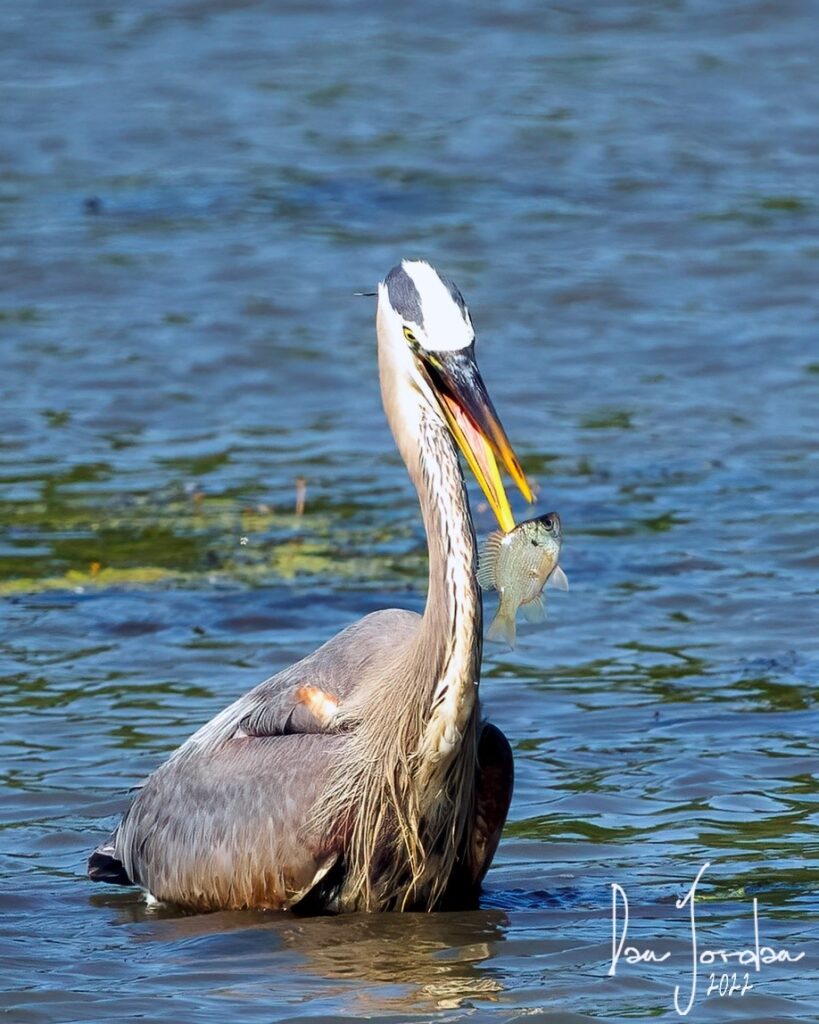
Herons swallow their fish headfirst, so the fins do not catch in their throats on the way down. They will flip their meals in the air and catch them in the proper orientation as can be seen in the photo to the right. I caught this GBH in the pond near the Hinsdale Central School catching a fish then flipping it in the air until it was just the right angle to swallow headfirst. The following photo shows the doomed fish about to be swallowed.
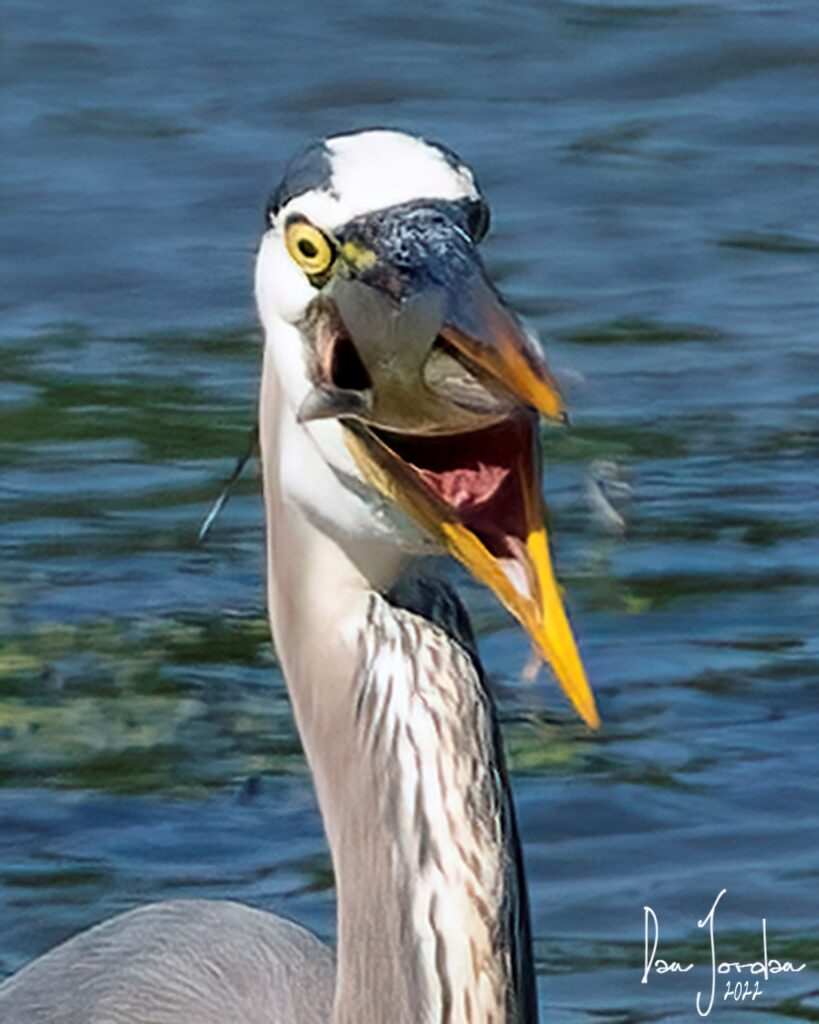
Great blue herons nest in colonies, known as rookeries. Technically, heron rookeries are known as heronies (I have trouble with that word, so I default to rookeries, myself). Their rookeries can have as many as 500 nests in them. There is a rookery at Barnum Swamp, near Eldred, PA which I photograph a lot which has 5 nests. There are large rookeries along the NYS Thruway west of Syracuse, which can be seen from the highway.
GBH’s lay from 3-6 eggs normally. Their nests are small for their size and since the young herons reach near full adult size before fledging, the nests can get very crowded.
Great blue herons can be very vocal. Their call is somewhat of a squawk, like that of a crow or raven but “on steroids”.
GBH’s are monogamous for the season. That is they are loyal to their mates during the breeding and nesting season, after that, all bets are off.
Migratory herons can go as far as central and south America but generally take up residence in such places as Florida or anywhere there is enough fish to satisfy their hunger. Heron population in the southern states swells during the winter season.
The rest of this article will be photos. I have so many photos, I could fill several of these editions. Perhaps, there will be a second GBH edition in the future, as there is a lot more information to be shared as well about these beautiful migratory birds.
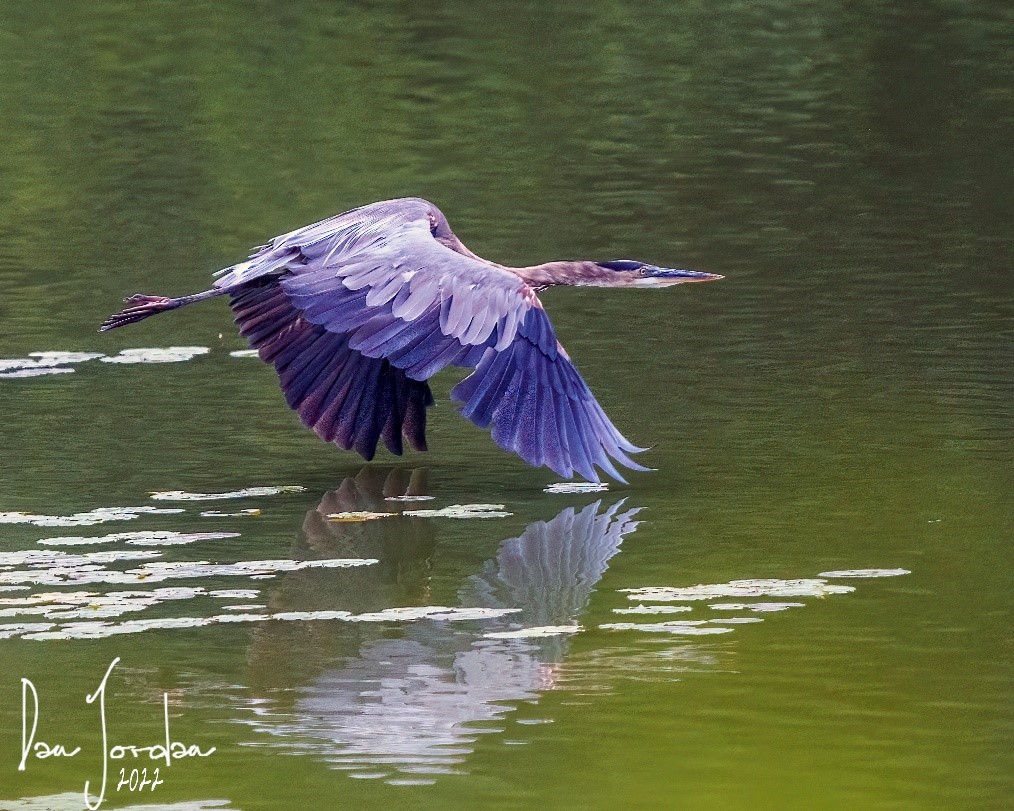
This GBH (left) was photographed in flight at Beaver Lake (popularly known as Alma Pond) in August of 2022.
This image (below) shows a GBH high in a tree fetching a stick for its nest. This was at Barnum swamp, near Eldred, PA. The photo was captured in April of 2021. I had not witnessed this behavior before. The heron snapped off a dead branch, using its long reach afforded by its long neck.
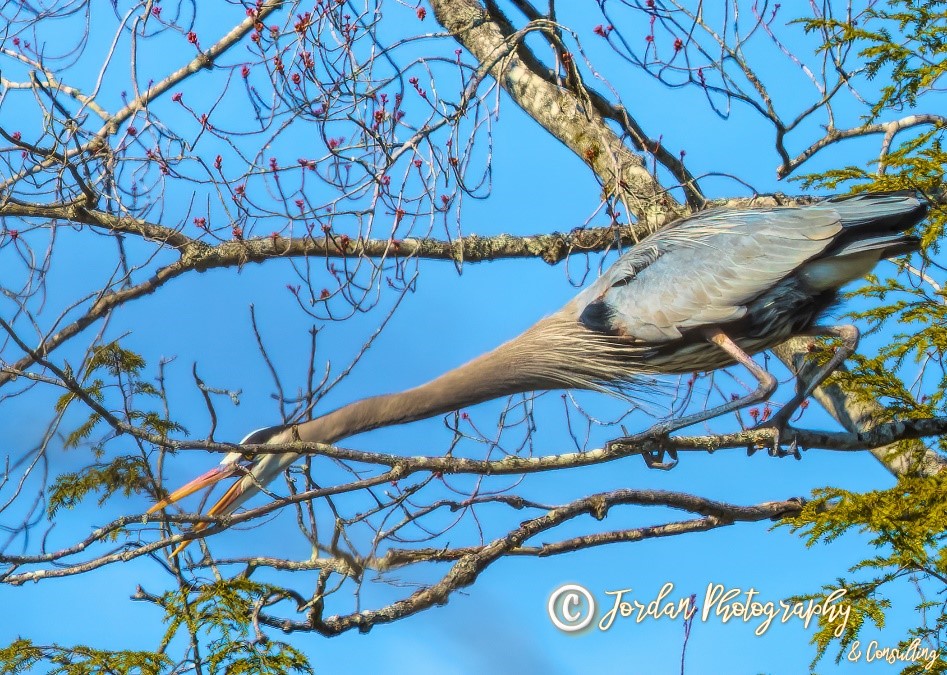
This next photo shows a GBH gliding through the Montezuma National Wildlife Refuge in July 2021. This provides an interesting view of their flight, how they tuck in their long necks for aerodynamics.
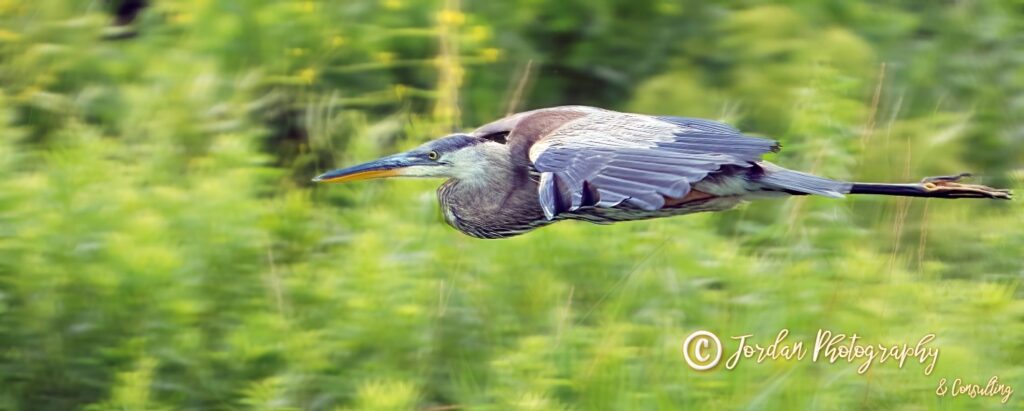
Compare this photo to the previous one where the heron had stretched its neck out long ans straight.
Now for some rookery shots. The photo below was shot again at the Barnum swamp, it shows a nest with 4 fairly young GBH juveniles with one of their parents. This photo was captured on 6-25-2021.
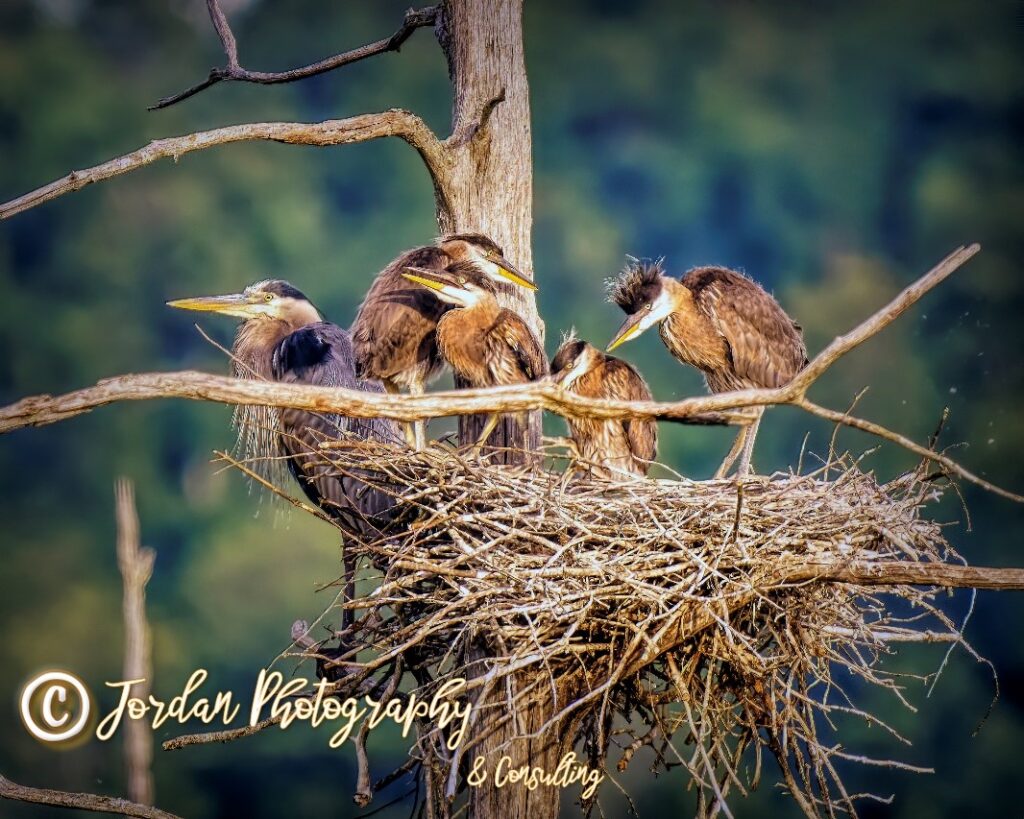
The photo below is of one of the Barnum swamp nests in April of this year, before the eggs were laid.
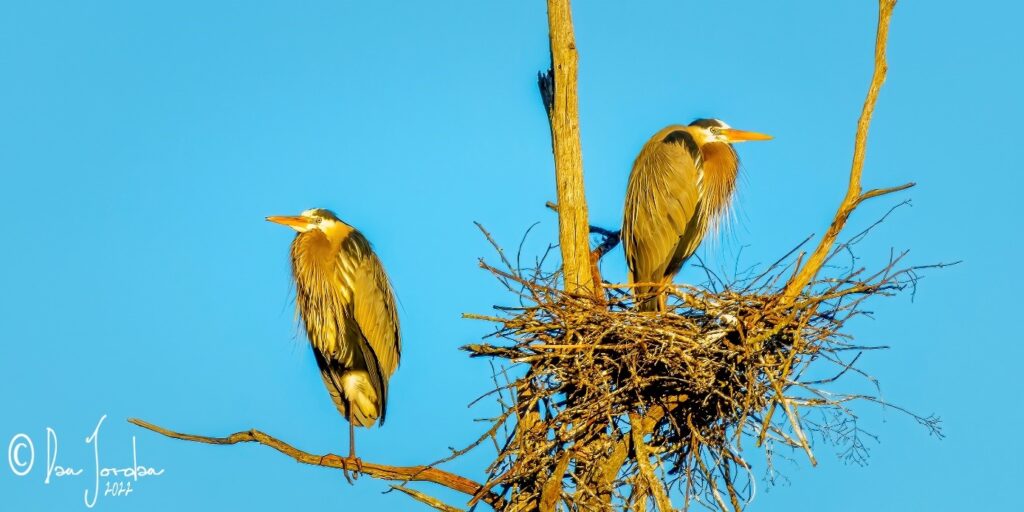
And the next photo shows 4 nearly fledged juveniles on one of the Barnum swamp nests on July 2, 2022. They were eagerly awaiting the return or one of their parents with food!
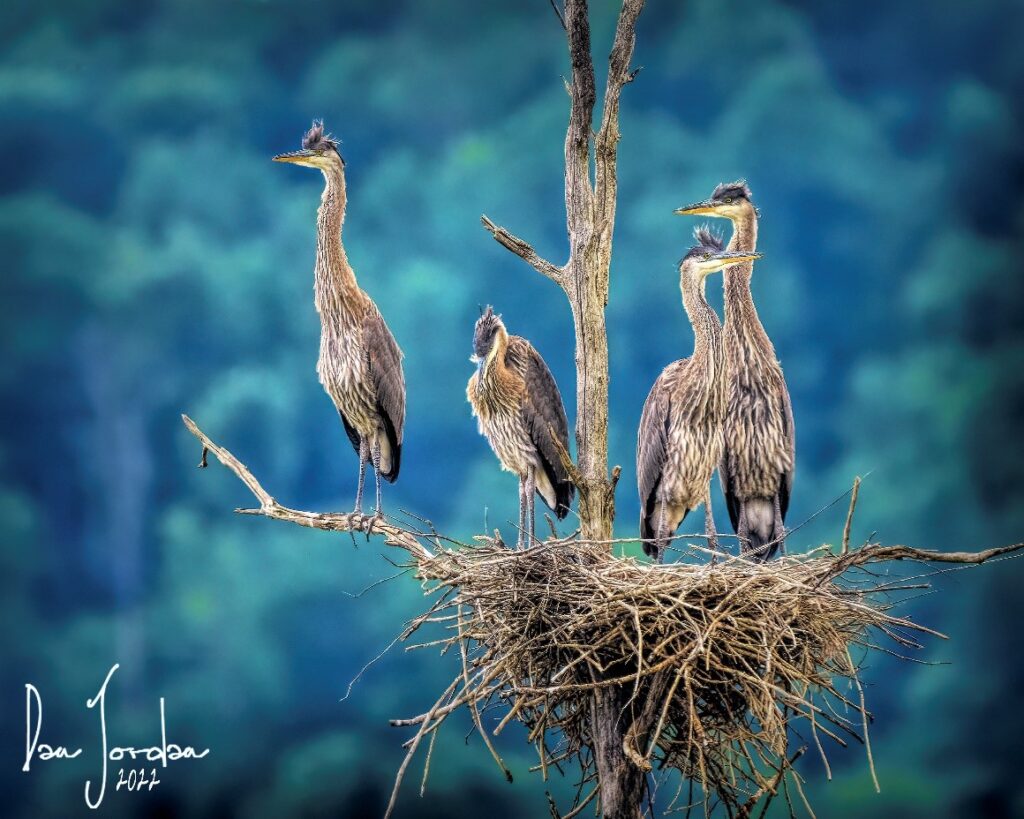
The last two photos show herons that came back a bit too early, I captured these images, again at Barnum swamp, in a snowstorm in April of this year. The herons were in full mating plumage. In the first, the size difference can be seen, which makes the heron in the foreground, the male of the pair.
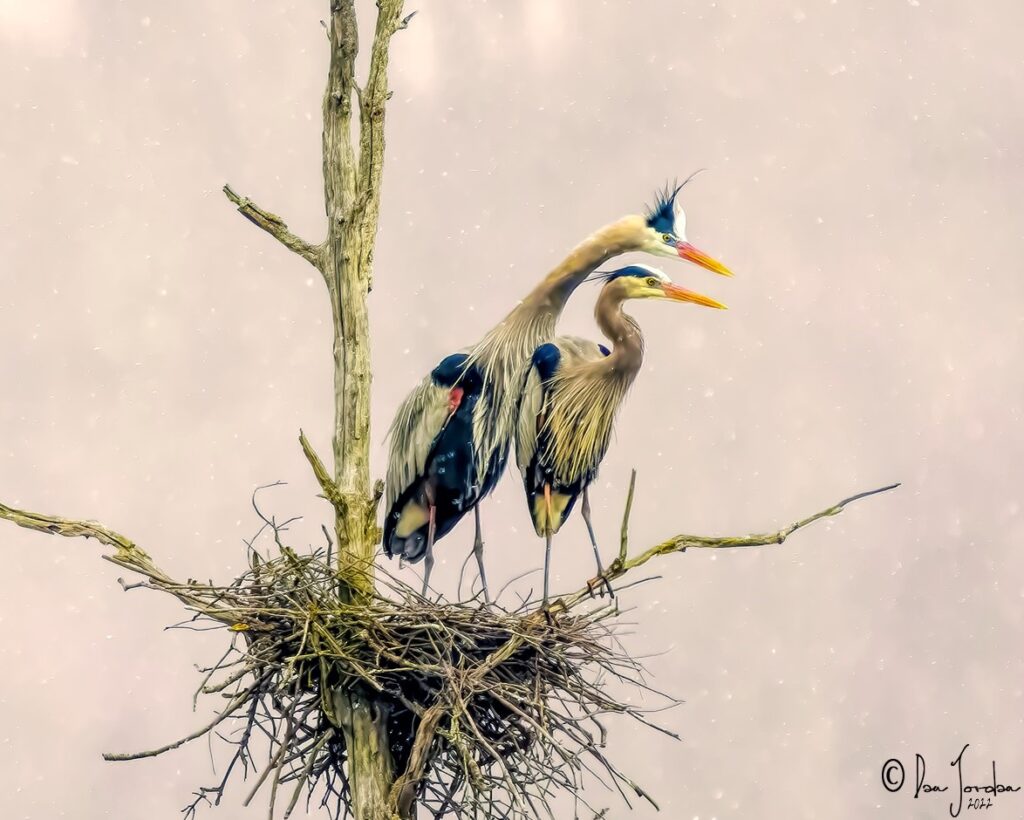
The last photo shows that same male putting on a display for his mate with an amazing array of feathers and deep blue colors.
